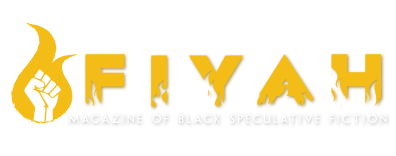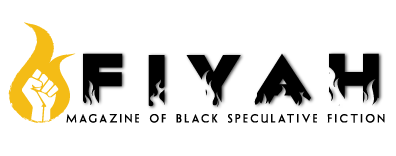Folklore and folktales are frequently confused. Folktales are stories passed down from generation to generation, particularly those that are part of a culture’s tradition. These include stories about the tortoise and the hare, Anansi the spider, and other African fables.
Folklore on the other hand is the unwritten literature of a people, their cultural canon passed down orally across the generations. It encompasses the tales, legends, or superstitions held by the people. This unwritten literature includes stories, proverbs, riddles, and songs.
The place of Folklore in African Culture
As a child, I was told stories by my grandmother and my mother. The magic stories featured animals, people, and even spirits. Other stories were about ancestors, men, and women who came before us. These legends and myths told about my people’s way of life, slave traders, where they settled, and how they lived. Also part of our oral history were origin stories: of a tribe and creation.
Folklore is regarded as sacred in most tribes in Africa. It carries the essence and mementos of a people. It serves as entertainment, an information source, a kind of Bible, and a library for future generations.
Many African tribes are found in multiple countries, they defy the borders drawn later like the Yorubas found mostly in Nigeria and in four other West African nations or the Maasai found across Kenya and Tanzania. Our continent is divided by the Sahara desert into two regions, the northern African region above the desert and Sub-Saharan Africa below the desert. For this article, our interest lies South of the Sahara.
Introducing Mythological Figures found in African Folklore
The majority of the tribes in Africa have a creation story as part of their mythology, their take on how the world was created. Central in most of the creation stories is a Creator God who either directly created or caused events that led to the creation of man.
For the Yoruba and the Igbo, he is called in their languages, the Maker and Owner of Life. The people of Akan call him the Excavator who created all things; the Akamba call him the Maker of All Things; the Banyarwanda know him as the Potter of Life; the Tiv refer to him as the Great Carpenter; the Kiga call him the fashioner. Among the Forest People of Central Africa and the Gikuyu, there are traditional hymns that talk about the attributes of a Creator God.
Then the deities are lesser gods. Unlike the principal Creator God, they are often more involved in human lives. Each deity has its domain, an area in which it specializes.
The Lovedu people have Mujaji, a rain goddess. Ala, a kind of mother earth figure from the Igbo tribe, is the ruler of the underworld, and the goddess of fertility. Others include Ogun from the Yoruba people, the god of war and iron, and Tano, also a god of war from the Akan people.
A tribe can have a myriad of gods and goddesses due to the different roles each one plays.
Spirits in African mythology are mostly tied to geographical locations such as lakes, rivers, oceans, mountains, forests, or even trees. They have the power to harm or bless man but are much less grand than the deities.
Ancestors are believed in African traditional society to be the spirits of loved ones and family members who have passed on. They are mostly seen as good, helpful, and protective. They live separate from man, either in a different world of the dead, underground, in the sky, or in a faraway land. Some tribes worship these ancestors as deities with shrines dedicated to particular ancestors. Others hold ceremonies where these spirits are invited or summoned to join, such as in masquerade and libation ceremonies.
Legends are men and women who have performed feats that immortalized them before their people. They are also sometimes worshiped as deities; some are kings, regarded as being divine, and sometimes they feature in creation stories.
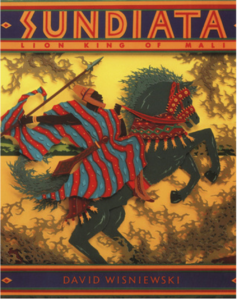
Legends are also immortalized in songs and epics that tell stories of their legacy and mighty acts. An example is the Epic of Sundiata, which is an epic poem of the Malinke people. The poem tells the story of Sundiata Keita, founder of the Mali empire, and how he built the Empire of Mali in the thirteenth century. While the Hausa people have the epic of Bàyā̀jiddà who came from Baghdad and founded the Hausa states.
Then the Trickster is an orchestrator of mischief in African folklore, usually taking the form of an animal, god, or human. The most popular animal tricksters are Anansi the spider and Tortoise. Other trickster animals in fables include the hare, the antelope, the monkey, and the praying mantis. Trickster gods include Ekwesu (Igbo), Eshu (Yoruba), Ogo-Yurugu (Dogon) Legba (Fon).
It has been estimated that there are over seven thousand African myths, legends, and folktales. Despite the vastness of the continent, the many clans, and languages, African myths and folktales have much in common. All African myths and folktales were developed in the oral tradition.
Their rich cultures were orally passed down from generation to generation in the forms of stories, songs, epics, myths, etc. For some tribes, these were told by storytellers called the griots or jeli. In other cultures, these are passed down among the people, from an older generation to a younger generation. Oral tradition seems to have existed on the African continent longer than on any other.
The Creator God, deities, and spirits are also central to almost every tribe. Each tribe has its version of how the world was created. Fables are also similar across different cultures. Although mostly told to entertain, these stories often have moral undertones.
8 Speculative fiction books inspired by African Folklore
While speculative fiction has been around for a long time, black authors in this genre have been scarce. In the SFF genre, finding books with African themes and characters has historically been difficult and required networks of interested readers to share them with new audiences. This is why it is such a huge win to see an influx of black authors who are weaving vibrantly imaginative and profoundly moving Afrocentric stories about black characters.
Even more moving is finding books fashioned from Africa’s rich and diverse cultures. Stories that are a reimagined composition of the stories that have been passed down from generation to generation.
In no particular order, here are 8 such stories:
- Zahrah the Windseeker by Nnedi Okorafor
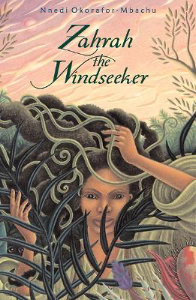
Nnedi Okoroafor’s debut novel gracefully melds African folklore with a coming-of-age tale inZahrah the Windseeker, is a young adult fantasy novel. The novel is based in the fictional world of the Ooni Kingdom, where a 13-year-old Zahrah lives. Zahrah considers herself a normal girl, but others around her don’t see her that way. She has dada locks, rumored to come with unusual powers. Other people are afraid of her but Dari, her best friend, is the only one who isn’t.
Dari is put at risk when Zahrah begins to come into her powers and weird things start happening. Zahrah must confront everything she fears to save Dari, including her special powers.
In the book, dreadlocks are called dadalocks, a wordplay on the Igbo word for dreadlocks: dada. People born with dada are believed by the Igbo to have spiritual power. They are believed to have strong connections with deities and are often seen as possessed.
Touching a dada’s hair without consent is a big no-no as it is believed to make the child sick. If you did so, you had to give the child cowries – a kind of currency and means of exchange. It’s why some dadas have a lot of cowries tied to their hair.
Cutting their hair without their consent is believed to cause dire consequences. When the parents want to cut the hair of their children, they go and find a priest to appease the gods for cutting the hair. In more recent times, due to the advent of Christianity, they find a Christian priest who blesses and prays over the child. Then the child is treated to goodies and a ceremony after which the hair can be cut, to do otherwise would mean altering the destiny of the child.
Nnedi uses the story to address the stigma attached to dada in the real world. I love that she uses the story to point out that the way others see you doesn’t define you. This is a fascinating story of courage, adventure, and finding oneself.
- David Mogo, Godhunter by Suyi Davies Okungbowa
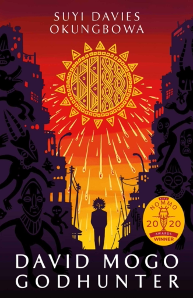
Suyi Davies Okungbowa’s debut novel is a fantasy novel set on the streets of Lagos, Nigeria. David Mogo, the protagonist, is a demigod and a godhunter. A crater has fallen in the middle of the city and with it fell gods and spirits, leading to clashes between humans and the fallen gods. David Mogo takes on jobs hunting these deities but a job comes along that may be more than he bargained for.
This book had its readers split in two; those who didn’t understand the world-building, deities, or his use of pidgin English and authentic Yoruba terms. The readers that got it, gasped at his fantastic world-building and how seamless and easy the book was to read. He drew a lot of the book’s scenes from the city of Lagos and used a lot of Yoruba mythology and culture in his novel but there are also gods from other tribes like Aziza.
Aziza is a creature from the mythology of the West Dahomey people. They are nature spirits, whose description fits that of the fairy. They are very beautiful little creatures with African features, possess wings, and glow with magical light. They are seen as mostly benevolent and use their magic and knowledge for the good of humans.
Suyi’s use of multi-tribal gods is plausible because Lagos, although an inherently Yoruba city with a majority of people from the tribe, also has other tribes thriving in the city of 15 million people.
The gods Olokun, Sango, Ogun, Oya, and Oba are some of the Yoruba gods used in this book. Olokun is the patron god of the sea. In Yoruba and West African mythology, Olokun is seen as androgynous and can be either male or female. In ode to this, the author uses a non-binary pronoun to represent the sea god. Eshu, the trickster, another element in Yoruba folklore is also in the book.
His use of African traditional religious ritual practices like warding ritual and charm casting was as accurate as possible. It’s a post-apocalyptic godpunk story and worth picking up.
- Freshwater by Akwaeke Emezi
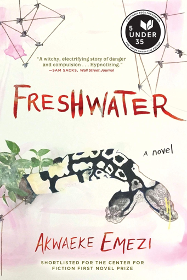
Freshwater is an autobiographical fiction novel. The story is narrated by the protagonist, Ada, an Ogbanje, and the selves that inhabit her body. She’s a young Nigerian woman with a fractured sense of self or multiple personalities.
The story follows the different timelines of her life. She has a dysfunctional Nigerian upbringing and as she comes of age, the selves start striving to dominate her. She attends college in America where she encounters even more trauma. The selves within her get stronger as Ada gets weaker and weaker…
In the book, Akwaeke explores the theme of Ogbanje. In Igbo Folklore, Ogbanje is believed to be a malevolent spirit that comes in the form of a child, destined to die and reincarnate over and again to torment the mother and family. They are believed to have a connection to Nne Mmiri and Onabuluwa, deities in Igbo mythology that are in charge of the portal to the physical world.
It is believed that they like to come to families where they will be pampered. Usually, one where a child is desperately wanted, just like Ada’s parents in the book. When they don’t get their way, Ogbanjes threaten to die and are believed to make themselves sick as a result. When they die, their bodies are mutilated with razors to identify them when they come again.
The Ogbanje child is characterized by a short life span, hearing voices, falling and screaming from unseen blows, fighting unseen people, violent dreams, sharing food with unseen people, and conversing with oneself. They are usually female and beautiful.
In more modern times, some have argued that Ogbanje was a form of sickle cell anemia, as this accounts for the short life span and the mothers losing multiple children. Others believe it to be schizophrenia, which accounts for the mental disorder, or even a combination of the two. This powerful tale explores the myth of an Ogbanje, possibly with schizophrenia.
- Akata Witch by Nnedi Okorafor
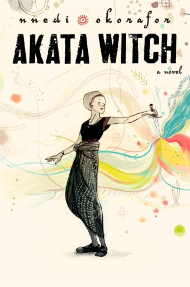
Akata Witch is a young adult fantasy novel. The story is about Sunny, a 12-year-old girl who’s an albino. Her parents brought her back from America and enrolled her in a school in Aba, Nigeria. She is castigated by their neighbors for her albinism and because she came from America and is dubbed ‘akata’ which means wild animal.
She makes friends with other children, Chichi and Orlu. She soon finds out who she is, where her powers come from, and what her mission is. She teams up with her friends to fight a great evil, one that bodes ill will towards children everywhere.
Nnedi as usual pulls from Igbo folklore and mythology in her book. She weaves Nsibidi scripts into her story, where it is used as a writing form by the Leopard people. Nsibidi is a writing system of symbols and pictograms majorly associated with the Ekpe leopard society, a West African secret society. Though it was also used among the Igbo, Efik, Ibibio, and Bahumuo people. A lot of the Nsibidi scripts in the public record were made by missionaries and white men and are scripts denoting love and love affairs, the ones on war and more serious subjects were kept secret.
Other figures from mythology in the book are Mami Wata, a beautiful water spirit that can take on human form. It’s said to have long hair and fair skin and is often a jealous, seductive and dangerous spirit. Ekwensu, another mythological figure seen in her book, is from Igbo mythology; he is a crafty, chaotic, violent, and malevolent trickster god.
Her use of the concept of the masquerade in the story was also from Igbo mythology. In Igbo folklore, masquerades are believed to emerge into the human world from ant-holes. This is because the spirit world is believed to be under the earth. Just like in the novel, masquerade summoning is dangerous and reserved for those that have the knowledge and power. Also true of the Igbo traditional societies, the uninitiated had no business or knowledge in summoning masquerades.
- Icarus Girl by Helen Oyeyemi
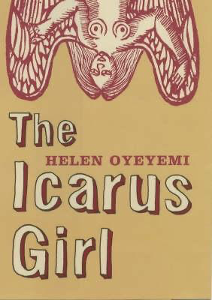
Nigerian-born Helen Oyeyemi tells a horror story borne of Nigerian and Greek mythology. Jess is an 8-year-old girl of mixed racial parents. Her mother is Nigerian and her father is British. She struggles with anxiety and other social issues and has difficulty making friends while living in England. When her parents take her to Nigeria she makes her first friend, a girl named Tilly Tilly. She spends more time with her new friend who follows her back to England.
Despite wanting others to meet her friend, no one but Jess has met Tilly Tilly. Things take a terrible turn when her new friend shows terrifying signs of being increasingly twisted and sinister as the story unfolds.
The story explores the theme of Abiku. Abiku is a Yoruba word that means ‘born to die’. Abiku children in Yoruba mythology usually die before the age of twelve. They are believed to come from a community of demons living in the forests and are usually found around and within large Iroko trees and huge silk trees. They leave their “Ẹgbé” – a gathering of lost children who live within the Iroko tree – to become human children with a sworn promise to return to the fold at a specific time. As the time of their departure reaches, they fall sick and ultimately die, returning to their spirit children community.
- Dominion: An Anthology of Speculative Fiction from Africa and the African Diaspora
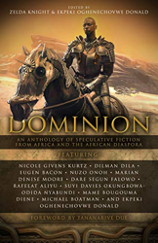
Dominion is a collection of magical stories by black authors of the speculative fiction genre. It’s the first anthology written exclusively by Africans and the African Diaspora. It contains short stories from fantasy to horror and science fiction. It comprises one poem and twelve short stories of speculative fiction.
A fascinating scope of scenes and worlds is showcased: some are set in ancient African worlds, and others are set in the future. There is something in it for everybody.
In some of the stories, the writers use deities from different African mythologies within their stories. Other stories explore the use of traditional African magic and other themes from African tradition.
- Tail of the Blue Bird by Nii Parkes

Set in the rural Ghanaian village of Sonokrom, where traditional ways still exist and thrive. The girlfriend of a government minister finds her way into the village whilst following a strange blue bird. In the village, she stumbles across something incredibly shocking and, due to her connections, gets the police involved in investigating it.
The police call in Kwadwo Okai Odammten called Kayo, who studied forensic pathology in England and worked several years as a crime scenes officer in the Midlands. What follows is an interesting contrast between modern ways (and science) and tradition (and superstition) in solving a crime, which no one seems to know about.
The character who narrates the story, Yaw Poku, is a very traditional character who lends the story an otherworldly and archaic tone. This explains the use of the traditional language of Twi – a dialect of the Akan people. Folk tales are used by Yaw Poku to help them find answers to questions asked in the book. This is in line with one of the purposes of folktales, to guide and to teach. This is one story that leaves you contemplating the values of both tradition and modernity.
- The Deep by Rivers Solomon

This novel tells the story of merpeople, descendants of pregnant African slave women thrown into the ocean by slave owners. They live idyllic lives in the deep of the sea, ignorant of their traumatic past, too much for everyone to think of. Only one person has to remember, Yetu, the historian.
She carries the memories for everyone else, painful but extraordinary, awful and incredible memories that are destroying her. She escapes to the surface, running away from the memories, the expectations, and the responsibilities. There she discovers a world her people left behind long ago.
African folklore is not devoid of its share of the merpeople lore. Yemaya or Yemója is a Yoruba goddess. She is said to be the mother of all orishá, the gods and goddesses. She is the goddess of rivers and oceans and is usually depicted as a mermaid. She is said to be a motherly, protective figure caring for her subjects and is in charge of issues on healing, parenting, love, and women.
Yemaya was one of the gods that made it across the seas with the slaves. She is worshiped in the Caribbean, Brazil, Cuba, and even Uruguay by descendants of the worshippers that made it across the seas long ago.
Mami Wata, or Mother Water, appears here again. She is another African mythological figure in the pantheon of water spirits. She is also usually depicted as a mermaid, beautiful with long, flowing, black hair. The Dogon people have an origin story involving fish creatures called nommos. The sky god Amma is responsible for creating these half-fish half-people as the first living creatures on earth.
There’s nothing more magical than hearing a story that has traveled thousands of years. It transports you into a world of people who have gone before you, the factors that shaped their lives, and how they lived.
A writer, Eudora Welty once said, “Long before I wrote stories, I listened for stories…”
